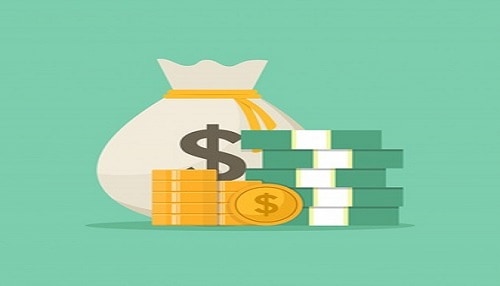What Is Fiat Currency?

What is Fiat Currency?
Simply put, fiat currency is legal tender that derives its value from its issuing government rather than a physical good or commodity. The power of the government, particularly the central bank, is essential in the use of this kind of currency since it determines its value. To buy goods and services, make investments, and accumulate savings, the fiat currency system is used in the majority of nations across the globe. The value of legal tender is now determined by a commodity-free system called fiat money. Previously, this role was held by the gold standard and other commodity-based systems.
The Rise of Fiat Currency
Fiat currency originated centuries ago in China. Around the turn of the 11th century, the Szechuan province started producing its own paper currency. Initially, one could purchase it with silk, gold, or silver in return for it. But ultimately, Kublai Khan ascended to power in the 13th century and built a financial system based on the concept of fiat money. Historians are of the opinion that this money had a significant role in the collapse of the Mongol Empire, with excessive expenditure and hyperinflation being the primary causes of the empire’s destruction.
During the 17th century, fiat money was also in use in Europe. Spain, Sweden, and the Netherlands were some of the European nations that utilized it. The Swedish government ultimately decided to go back to the silver standard since the system was such a dismal failure there. Over the course of the subsequent two centuries, New France in Canada, the American Colonies, and eventually the Federal Government of the United States, all tried their hands at experimenting with fiat money, with varying degrees of success.
By the turn of the 20th century, the United States had resumed, although on a more restricted scale, the practice of basing its currency on commodities. The practice of exchanging paper currency for gold was discontinued by the government in the year 1933. In 1972, while Richard Nixon was serving as President of the United States, the country made the last step in the gold standard’s decline on a global scale by transitioning to a currency system based on fiat rather than gold. This resulted in the widespread adoption of fiat money around the world.
Fiat Currency vs. The Gold Standard
The gold standard system allowed for paper banknotes to be converted into gold at any time. In point of fact, the government controlled a limited quantity of gold reserves, which ensured the value of all paper currencies. In a monetary system that was pegged to physical commodities such as gold, governments and banks were required to have an equivalent value in gold reserves in order to be able to issue fresh money into the economy. Because of this arrangement, the government was constrained in its capacity to generate new currency and to boost the value of its existing currency based simply on economic considerations.
On the other hand, under a system that uses fiat currency, money cannot be exchanged for anything else under any circumstances. When using fiat money, governments are able to exert direct control over the value of their currency and directly link it to the state of the economy. To a far greater extent, governments and the central banks of their respective nations regulate the monetary systems. They have access to a variety of instruments, including the establishment of fractional reserve banking and the execution of quantitative easing, which enable them to react effectively to a wide range of financial events and crises.
Those who support the gold standard say that a monetary system that is pegged to commodities is more secure than one that is not because it is supported by something that is both tangible and precious. Those who advocate the use of fiat currencies argue that gold prices have been anything but steady. In the context of this discussion, the value or worth of both fiat money and currency based on commodities is subject to change. But a currency system that is based on fiat gives the government greater leeway to intervene in times of economic crisis because of the increased flexibility it provides.
Fiat Currency vs. Cryptocurrency
The fact that neither fiat currency nor cryptocurrencies are backed by a tangible asset is something that both types of money have in common. Nevertheless, this is where the similarities between the two types of money stop. Cryptocurrencies, on the other hand, are effectively decentralized, primarily because of a distributed digital record that is known as the Blockchain. Fiat currencies, on the other hand, are controlled by governments and central banks.
One further significant distinction between these two monetary systems is the manner in which each of these varieties of money is created.
Bitcoin, like the majority of other cryptocurrencies, has a supply that is both regulated and restricted. In contrast, banks have the ability to generate fiat money out of thin air, and they do so based on their assessment of the requirements of an economy.
As a digital form of money, cryptocurrencies do not have a physical equivalent and are borderless. Because of this, it is easier to conduct transactions across international borders with cryptocurrencies. In addition, the transactions cannot be undone, and the inherent characteristics of cryptocurrencies make it harder to keep track of their circulation in comparison to the traditional monetary system.
It is important to note that the cryptocurrency market is far less liquid and, as a result, significantly more volatile than regular markets. It is possible that this is one of the reasons why cryptocurrencies are not yet broadly accepted. Nevertheless, as the cryptocurrency economy develops and matures, volatility is expected to reduce.
Some Pros and Cons of Using Fiat Currency
There isn’t a consensus among economists and other financial specialists about whether or not fiat money is preferable. Those who support and those who oppose this monetary system dispute vehemently about its advantages and disadvantages.
- Scarcity: Fiat money is not impacted and limited by the scarcity of a physical commodity like gold.
- Cost: Fiat money is more affordable to produce than commodity-based money.
- Responsiveness: Fiat currency gives governments and their central banks the flexibility to address economic crises.
- International Trade: Fiat currency is used in nations around the world, making it an acceptable form of currency for international trade.
- Convenience: Unlike gold, fiat money is not reliant on physical reserves that require storage, protection, monitoring, and other costly demands.
- No Intrinsic Value: Fiat currency holds no intrinsic value. This allows governments to create money from nothing, which could lead to hyperinflation and collapse their economic system.
- Historically risky: Historically, the implementation of fiat currency systems has typically led to financial collapses, which indicates that these systems present some risks.
There is no way to predict how any of these monetary systems will develop in the future. Despite the fact that cryptocurrencies still have a long way to go and will undoubtedly face many more obstacles in the future, the history of fiat currency reveals the fragility of this type of money. Likewise, cryptocurrencies still have a long way to go. Because of this, a significant number of individuals are investigating the viability of conducting at least some portion of their financial dealings using a cryptocurrency system. This is one of the primary reasons why.
Bitcoin and other cryptocurrencies were developed with the intention of experimenting with a new monetary system that would be based on a decentralized peer-to-peer network. This was one of the primary motivations driving its development. There is a good chance that Bitcoin was not developed with the intention of supplanting the whole fiat money system but rather to provide an alternative economic network. Nevertheless, it unquestionably has the capability of developing a better monetary system in order to produce a superior society.




















